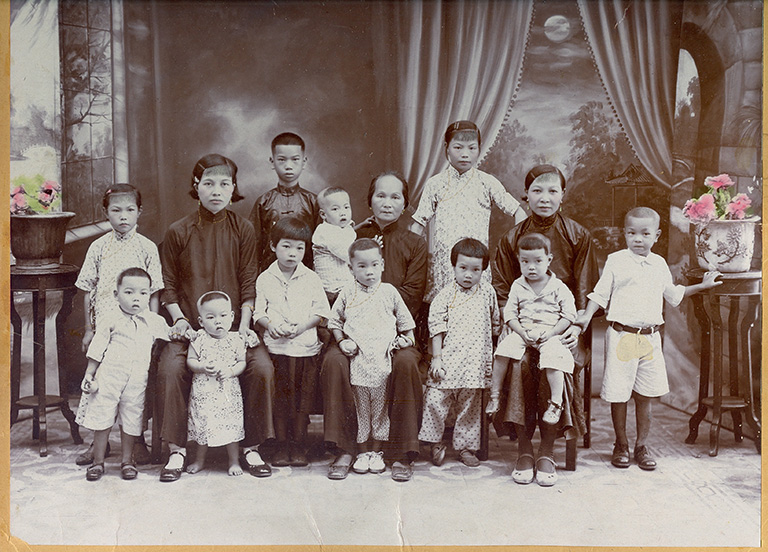The 1923 Chinese Exclusion Act

Background
People of Chinese ancestry have a long and storied history in Canada. As early as 1788, the first Chinese arrived in what is now British Columbia, as part of a British fur trading expedition. In the 1850s, Chinese men came in response to the Fraser and Cariboo Gold rushes and thousands more came to help build the Canadian Pacific Railway (CPR) between the 1881 and 1885.
Despite this long history, Canada’s immigration policies in 19th and 20th centuries discriminated against people based on race, particularly people wishing to emigrate from China.
In 1885, following the completion of the construction of the CPR, which relied heavily on Chinese labour, the Canadian government passed the Chinese Immigration Act. This legislation imposed fees called a “head tax” on each Chinese person immigrating to Canada, with very few exemptions.
On July 1, 1923, the government passed the newest version of the legislation, which came to be known as the Chinese Exclusion Act because it completely banned Chinese people from entering Canada. From 1923 to 1947, when the act was finally repealed, less than 15 Chinese migrants entered the country. The legacies of these policies were deep and negatively impacted communities and families for generations.
On the 10th anniversary of the government’s apology for the Chinese Head Tax and Exclusion Act, Senator Victor Oh shared, “On June 22, 2006, the Government of Canada issued a full apology to Chinese Canadians for the head tax and Exclusion Act. This was an important step towards reconciliation that enabled our community to move forward as full and equal members of Canadian society. Fellow colleagues, we are here to look out for the best interests of Canadians, especially those whose interests may be compromised or unrepresented. I encourage you to take the time to learn more about the history and contributions made by Chinese Canadians and immigrants to our great country.”
Teachers can learn more about the Head Tax and Chinese Exclusion Act of 1923 with the following sources:
- “Discrimination,” Government of BC
- “A Seat at the Table,” Vancouver Historical Society
- Unwanted Soldiers, Jari Osborne, National Film Board of Canada.
- “Mass Capture: Chinese head tax and the making of non-citizens,” Lily Cho.
- “Chinese Head Tax in Canada,” The Canadian Encyclopedia
- “Chinese Immigration Act,” The Canadian Encyclopedia
In the Classroom
July 1, 2023 marks the 100th anniversary of the Chinese Exclusion Act. Below are some projects, events, and exhibits that commemorate this anniversary. Have your students explore these resources digitally or encourage them to attend in-person if possible. We also encourage you to see if there are any other events taking place in your community.
After learning about the Chinese Exclusion Act, task your students with sharing their knowledge with other students in their school. They could make posters to display in the hallway, present what they have learned to other classrooms, or find another appropriate way to recognize this anniversary and ensure other students learn about and reflect upon these events in Canadian history.

National Remembrance Event
The Honourable Senator Yuen Pau Woo, the Honourable Senator Victor Oh and Action! Chinese Canadians Together (ACCT) Foundation
On June 23, 2023, a national remembrance event will take place in the Senate to reflect on the 1923 Exclusion Act and to take action against racism. Teachers are encouraged to organize a livestream viewing event and use it as an opportunity to inform students about the Exclusion Act.
Beyond Gold Mountain: Canadians of Chinese Descent
The September 2023 issue of Kayak: Canada’s History Magazine for Kids is devoted to Canadians of Chinese descent. Readers learn about this history of racism, struggle and success through factual features, fun snippets, games and an original fiction story and comic.
Chinese Canadian Museum
Wing Sang Building, Vancouver, British Columbia
Canada’s first museum dedicated to Chinese-Canadian history will open in Vancouver’s historic Chinatown on July 1, 2023, on the 100th anniversary of the Chinese Exclusion Act.
The Paper Trail to the 1923 Chinese Exclusion Act
This project aims to honour those who faced discrimination in the past and provide an opportunity for Canadians to learn about the paperwork entailed in the machinery of racism. After crowd-sourcing C.I. Certificates – special identity documents only required of people of Chinese ancestry in Canada – scans of the originals will be on display in an exhibit at the Chinese Canadian Museum and then housed in a public online archive at the University of British Columbia. Learn more about the history of C.I. certificates and those who owned them on their website.
“The Chinese head tax and the Chinese Exclusion Act”
Matthew McRae, Canadian Museum for Human Rights
This blog post provides context to two discriminatory immigration policies in Canada, while sharing the family story of Dr. Henry Yu.
In My Yesterday
Canadian Museum of Immigration at Pier 21
This exhibit uses artwork, historical objects and documents to share artist JJ Lee’s family’s immigration experience. Learn more about the discovery that led to this exhibit in this article or check out the June-July 2023 issue of Canada’s History magazine.
Standing in the Doorway
Markham Museum, University of Toronto, York Region District School Board, and the Tribute to Early Chinese Immigrants Canada Foundation
This virtual and travelling exhibit will explore the stories of Chinese immigration to York region. The online exhibit will launch in May 2023 on the YRDSB Museum and Archives website, while the in-person exhibition will open in September 2023 at Markham Museum.
Swallowing Mountains
McCord Stewart Museum
In this exhibit, multidisciplinary artist Karen Tam pays tribute to the women of Montreal’s Chinatown from the 19th to 20th centuries.
Themes associated with this article
Advertisement







